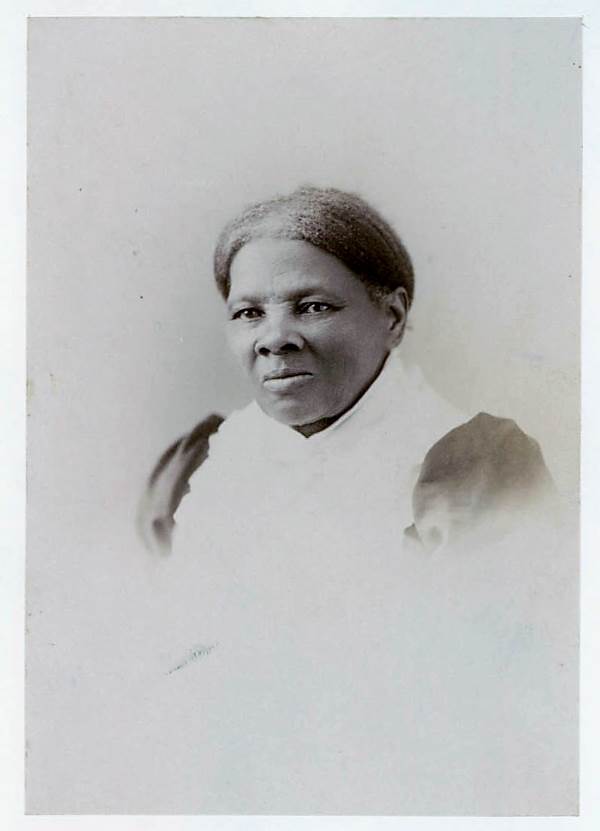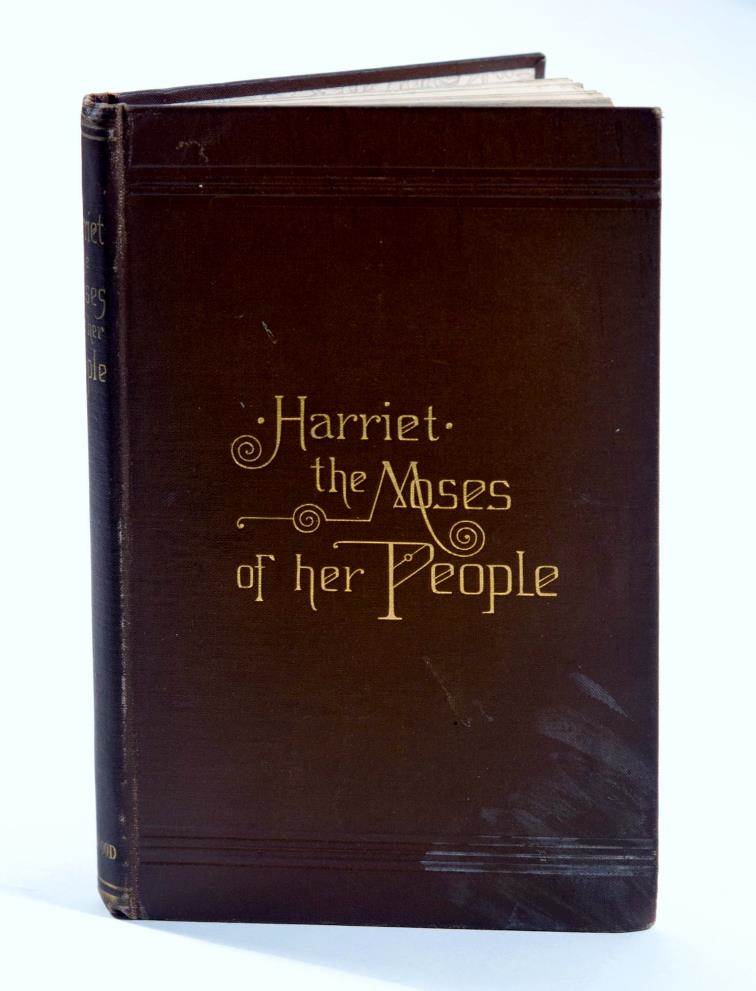By Susan Martin, Collections Services
Last week, the U.S. Treasury Department announced that Harriet Tubman will be featured on the new $20 bill, becoming simultaneously the first African American and the third woman (after Pocahontas and Martha Washington) to appear on our federal paper currency. An escaped slave, “conductor” on the Underground Railroad, Union scout, armed raider, humanitarian, suffragist: the more you learn about Tubman, the more fascinating she becomes. John Brown called her “General Tubman.” I decided to search the MHS collections for material related to this remarkable woman.
Unfortunately (but perhaps unsurprisingly) I didn’t find much. We do have three photographs of Tubman in our collection of Portraits of American Abolitionists, one from 1886 and two taken in 1906, when she was in her eighties.



We also hold a copy of Sarah H. Bradford’s 1886 biography, Harriet, the Moses of Her People, a second edition and revision of Bradford’s 1869 Scenes in the Life of Harriet Tubman. Both books were written from personal interviews with Tubman, who was, by all accounts, illiterate all her life.

But when I looked at manuscript collections, I turned up only two passing references to Tubman, neither of which mention her by name. Both appear in the correspondence of John A. Andrew, the famous Civil War governor of Massachusetts. Sparse in content, these particular letters are important and intriguing primarily because of context.
First, some background. According to Bradford, “In the early days of the war, Governor Andrew of Massachusetts, knowing well the brave and sagacious character of Harriet, sent for her, and asked her if she could go at a moment’s notice, to act as spy and scout for our armies, and, if need be, to act as hospital nurse, in short, to be ready to give any required service to the Union cause.” (pp. 93-94)
It looks like the two letters in our collection document Tubman’s trip south from Boston as she embarked on this espionage mission. Both were written by Col. Frank E. Howe in New York, formerly a member of Gov. Andrew’s staff. The first dates from 10 January 1862 and begins: “Colored woman arrived & is cared for.”

On 21 January 1862, Howe wrote to Andrew again, this time marking his letter “Confidential.” After discussing other matters, he said: “I have a letter from Washington informing me that the colored underground woman did not sail in the Baltic, but her luggage did – will send a pass on for her – & its all I can do.”

Subterfuge may have been the reason Howe didn’t use Tubman’s name. Presumably, she was traveling through New York and Washington to points south. Abolitionist Franklin B. Sanborn later confirmed: “In 1862, I think it was, she went from Boston to Port Royal, [S.C.] under the advice and encouragement of Mr. Garrison, Governor Andrew, Dr. Howe, and other leading people.” (Bradford, pp. 136-137)
I’d be surprised if there weren’t more references to Harriet Tubman buried in other manuscript collections here at the MHS, but unfortunately item-level subject access to our vast holdings is impossible. I found these two letters in Andrew’s papers because of an index to the collection created 35 years ago and encoded as part of the online guide. We hope our intrepid researchers will uncover more!

